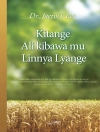Patterns of Contemplation is a uniquely innovative and comprehensive introduction to the sacred principles and symbolism of geometry, letters and numbers, discussed through the first in-depth analysis and English translation of a major Sufi devotional masterpiece, The Blessing-Prayer of Effusion (al-Ṣalāt al-fayḍiyya).
This special type of prayer, invoking God’s blessings upon the Prophet Muhammad, which is well known throughout the Islamic world, seems to have first become popular in the Maghrib (West) from the time of Ibn ʿArabi (d. 1240) onwards. Pablo Beneito and Stephen Hirtenstein provide the first critical edition of the Arabic text and English/Spanish translation of The Blessing-Prayer of Effusion, along with a fully annotated commentary, transliteration and recording. Although this well-known short prayer has been attributed since the 18th century to Ibn ʿArabi, the authors argue persuasively that it was actually written by Abdullah Bosnevi (d. 1644), a major Ottoman follower of the school of Ibn ʿArabi who originated from Bosnia. Also included is a brief introduction to the genre of blessing-prayer and one of its earliest examples in Arabic and English, The Prayer of Blessing attributed to ʿAbd al-ʿAziz al-Mahdawi (d. 1224), Ibn ʿArabi’s friend and mentor in Tunis (to whom he addressed his famous Futūḥāt al-Makkiyya).
Over five substantial introductory chapters and five appendices which surround the text of The Blessing-Prayer of Effusion, Pablo Beneito and Stephen Hirtenstein carefully uncover the extraordinarily rich meanings, kaleidoscopic structure, rhymes and symbolism that it contains, and show how they are interwoven in a majestically beautiful architecture of mysticism and poetry.
This is not only a prayer for recitation but an embodied invitation to the most profound contemplations on the nature of the Truly Human Being (al-insān al-kāmil).
Spis treści
CONTENTS
Introduction
Chapter 1: The Geometry of Reality: the circle and the dot
Chapter 2: Contemplation in letters and numbers, circles and mirrors
Chapter 3: The Two Effusions and the Language of Numbers: Fayḍ, Suryāniyya and the letter Ḍād
Chapter 4: Quranic Principles of creation: kun fa-yakūn and the Names Ghafūr and Wadūd
Chapter 5: Authorship and inspiration: Bosnevi’s approach in different texts
Chapter 6: The Blessing-prayer – a) parallel Arabic-English (facing pages, numbered, without notes, for recitation)
b) English translation with notes
Appendices:
A: Transliteration
B: Spanish translation
C: Letters and numbers, rhymes and key words in the Blessing-prayer
D: Structural analysis of the Blessing-prayer
E: The Prayer of Blessing by al-Mahdawī – Arabic-English (facing pages, E notes at end)
Bibliography
Index
O autorze
He read History at King’s College, Cambridge, and then studied at the Beshara School of Intensive Esoteric Education in Gloucestershire and Scotland. After a teaching career, he began writing and giving talks on Ibn Arabi’s thought at conferences across the world. In addition to lecturing and writing, he organises and leads tours 'in the footsteps of Ibn Arabi’, and is director of Anqa Publishing, an independent publishing company dedicated to bringing out the works of Ibn 'Arabi and his school. He has been Editor of the Journal of the Muhyiddin Ibn 'Arabi Society (JMIAS) since 1982. He currently works as a freelance Senior Editor for the Institute of Ismaili Studies in London, and lives near Oxford.







![Pokrywa Brian Schrag & Julisa Rowe: Community Arts for God's Purposes [Chinese] 貼近神心意的社群藝術 Pokrywa Brian Schrag & Julisa Rowe: Community Arts for God's Purposes [Chinese] 貼近神心意的社群藝術](https://static.worldofdigitals.com/thumb_webp/740/9781645083740.webp)




